A community blog by GoofierBrute
[Destructoid user GoofierBrute is here to remind us about the glory of Metroid Fusion now that a new 2D Metroid is happening this year and it’s somehow Metroid Dread. I’m long overdue a replay of this GBA classic. -Jordan]
Welcome back to Games That Time Forgot, where we look at games that have been forgotten by time. So how about this year’s E3, eh? It’s no secret that Nintendo absolutely dominated this year’s E3, partially because everyone else was sorely lacking this year, but mostly because they genuinely brought some amazing games and news this year: Kazuya Mishima is coming to Smash, Breath of the Wild 2 looks amazing (though please let me play as Zelda this time Nintendo), and we’re getting a new Advance Wars game done by WayForward (okay it’s actually a remake of the first two games and not the superior Dual Strike, but I’ll take what I can), something that made me a real happy camper.
But easily the biggest and most pleasant surprise of their show wasn’t a trailer for Bayonetta 3 or Metroid Prime 4, but rather a new 2D Metroid: the often whispered and rumored Metroid Dread. Hinted at, announced, and then mysteriously canceled numerous times, Dread has been the Holy Grail for the Metroid community, so to find out that it was not only happening and developed by MercurySteam (the same guys who gave us the excellent Samus Returns…..and the Castlevania Lords of Shadows games), but that it was also coming out this year was easily the highlight of the Direct and this year’s E3. Hell, I would argue that even if the rest of the industry brought its A-game this year, Nintendo still would have won based solely on Metroid Dread alone.
So with all that hype around Dread, let’s today talk about Dread’s prequel, Metroid Fusion.
I know the easiest thing to look at would be some of the less popular and more reviled entries like Other M and Federation Force, and while I have things to say about those games, Fusion is the game we’ll be discussing today for many reasons. Besides it being the most recent game chronologically in the Metroid timeline (yes there is a Metroid timeline) and also being the last original 2D Metroid released in almost 20 years (God I’m old), it’s been largely ignored by many people despite getting widespread acclaim and was even in development for fans who were unsure about the new and untested developers (at the time) Retro Studios, and their controversial take on the series (again, at the time): Metroid Prime. Even today, with Metroid games being few and far between, Fusion is often ignored by many fans, since it’s either Super or the first Prime that are often well-beloved.
But is that really warranted? Is Metroid Fusion the Metroidvania equivalent of peanut butter and chocolate, or is it more like oil and vinegar? There’s only one way to find out. This is Metroid Fusion.
Man, it feels nice to do one of these in a timely and relevant manner!
What is Metroid Fusion?
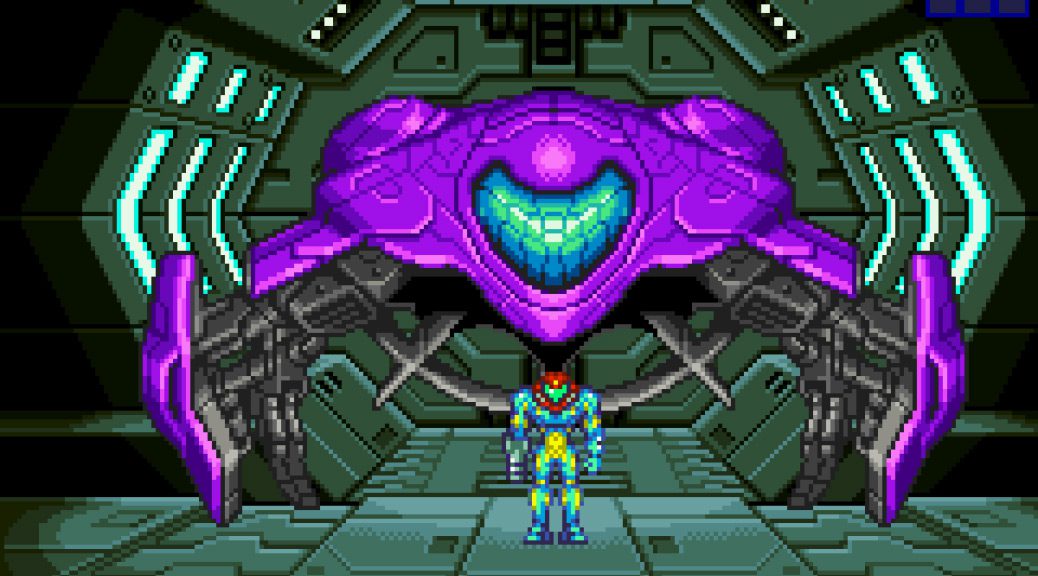
Metroid Fusion is technically the fifth game in the Metroid series (Prime released a day before) and was released on the Game Boy Advance on November 18th, 2002 in North America, November 22nd in Europe, November 29th in Australia, and Japan getting it on February 14th, 2003. I’m not really surprised Japan got it last, since the Metroid isn’t as big over there as it is over here, though it’s nothing compared to when China got it, which was in 2006. The game was developed by Nintendo R&D 1, aka the developers who worked on the previous Metroid games (specifically Super), and was directed by Yoshio Sakamoto. Fun fact: this was actually their second-to-last game before merging with Nintendo Software and Development. When the game was first confirmed in 2001, Ken Lobb, director of game development for Nintendo of America, said that it was a new game and not a remake of Super Metroid. Something that was interesting to discover was that the team made it a point not to use programming and design techniques from previous games, actually using Wario Land 4 as an example, with even some of the code from that game being used here.
Okay, so I’ve covered most of the basic development history of Fusion, but in order to get the full picture here, I need to change course a bit and talk about Metroid Prime. Because even though Fusion was technically announced before Prime, they’re pretty much intertwined at this point, and I don’t mean just because you can use a link cable on the GameCube version to unlock the original Metroid. I’m not going to go over the entire development history of Prime, though if you want to hear about it I recommend watching Matt McMuscles’ “Wha Happun?” series or even find a great article on Polygon about it, but needless to say that development for Prime was troubled and involved a lot of crunch, a lot of firings, some angry Nintendo higher-ups, and a whole lot of other things going on that it’s a miracle the game turned out great, let alone got made. But even if development went smoothly and Nintendo wasn’t forced to buy Retro because the founder was using Nintendo’s servers to run a porn site (no joke), Prime still had a lot to prove. It was being developed by a Western studio (one that no one had even heard of), it was going 3D, and it was going to be in first-person. And while the game turned out great in the end and Retro proved itself, at the time it could have easily gone wrong, and in another timeline, I might be writing about how Prime is the forgotten game.
So when Fusion was shown off, and it looked like a more traditional Metroid experience, it’s easy to see which one the fans were more willing to play. While I doubt Sakamoto and his team were making Fusion with that in mind, I can easily see an executive or marketing at Nintendo saying “Hey guys, we know you’re unsure about Metroid Prime, so here’s a traditional 2D game for you as well. Some sugar to let the medicine go down.”
Let’s see how that sugar tasted.
How does it play?
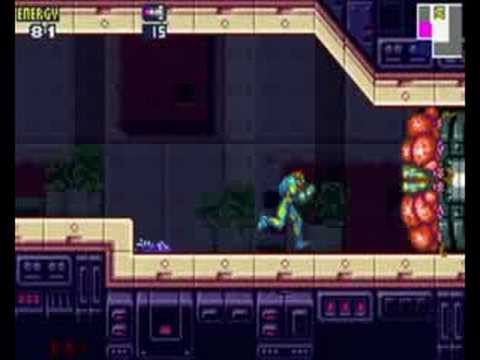
So full disclosure here: Metroid Fusion is my first 2D Metroid game. I had heard of the series thanks to Super Smash Bros., but I never got around to playing it until I got Fusion as a Christmas gift a couple years after its release; I also didn’t play Prime (my first Metroid game) until the sequel was announced. I’m telling you this because I want it to be known where I am when it came to Metroid Fusion: I wasn’t a fan of the series when I started, but by the end of it, I became a fan. Not someone who’s going to speedrun the game or anything, but enough of one that my copy of Castlevania: Aria of Sorrow can get a break if I want to play a Metroidvania. But I’m a lot older and have some experience with these games, so how does this game hold up now? Pretty great for the most part.
One of the things that set Fusion apart from previous games is that it’s a bit more linear, with areas more closed off, progression through said areas being more linear, and most controversial of all, mission briefs that told you where to go. To this day this is without a doubt one of the most controversial design ideas from Fusion, and everyone in the Metroid fanbase seems divided on it: some people liked it, and others didn’t. As for me……..honestly I’m kind of in the middle here; let me break it down.
On the positive side, I can see why the developers did make it linear and less open, because Fusion is more focused on story than in previous games, which is actually pretty good. Taking place after Super Metroid (though I guess technically it’s now after Other M), Samus gets infected by the X parasite after a visit to the planet SR388. After the events of Metroid II, the X parasite became the dominant species due to the eradication of the Metroids, and are a lot deadlier. They kill the host by draining their life energy and DNA, transforming into their host; Samus is no exception, as the infected parts of her Power Suit become the dreaded and feared SA-X. As Samus explores the abandoned BSL Station next to SR388, she encounters this heartless killing machine version of her with all of her most powerful abilities, made even worse by the fact that after being saved by a vaccine made from the baby Metroid in Super, she’s weak to the Ice Beam.
From a story perspective, the linearity works because while it’s not groundbreaking, Fusion‘sstory is actually pretty decent with the right sense of dread, suspense, and mystery, all of which makes Samus’ adventure quite compelling. That carries over into the gameplay as well, because at certain points of the game the SA-X will occasionally hunt Samus. At first, it’s usually as simple as hiding in a room and waiting for it to leave, or hiding in a hole in your Morph Ball form. Eventually, however, the SA-X will get smarter and start using some Power Bombs and Super Missles to break through, and before long you have to actually run away from it with little to no room to hide.
It’s weird to say this, but even today, the SA-X moments are still genuinely terrifying and suspenseful, and are among the scariest moments I’ve ever experienced in a video game. This is because unlike other games that have a powerful enemy chasing you like Resident Evil 2 Remake with Mr. X, the SA-X shows up so rarely that when it does appear, it’s terrifying. You know it’s there, but you don’t know when it’ll show up; it’s nice to see a series that was inspired by Aliens tap into the original Alien for this game. And it feels really satisfying to finally take it down toward the end of the game, as revenge for all that crap it gave me throughout the adventure. So to go back to my earlier point, I can see why Metroid Fusion is so linear when compared to previous Metroid games, because without that linearity, some of that impact is lost.
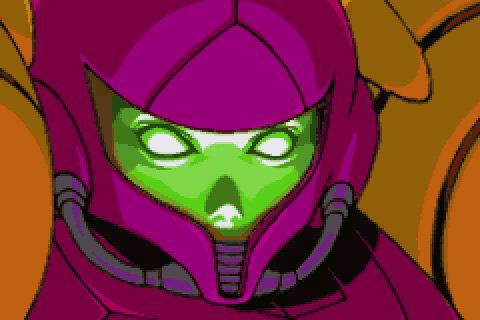
Having said all that, I can also see why a lot of Metroid fans are torn about this being more story-focused and linear. While it is great for new players to find their way and to understand what to do (every sector always has an opening area that has a briefing room, a save point, and a refill station), the problem is that the areas that you visit in question are so small and mostly easy to navigate that having the game tell me “go to this room” seems really pointless, since the game is already designed in a way that I don’t have to worry about getting lost. Take for example one of the sectors that’s supposed to be the fire area. Your computer tells you where to go, and that your path shouldn’t have any fire or lava, so get out of there if you encounter it. Well gee that’s great, but why not let me figure that out for myself instead of telling me, especially when previous games did this so brilliantly? Especially when there are some moments where the game does tell you to go look for something on your own or doesn’t show you everything, so why be inconsistent with what you show and tell me?
Not to mention that once you enter an area, you can’t leave it until you complete the mission, and you can’t go back to most areas until the end of the game, which again greatly limits what you can do. And while it is still possible to speedrun the game like all the others, it’s a little bit harder and requires a few more exploits than previous games did, which while it’s not something that I do personally (again, casual fan here), I can see why some people aren’t fans of it. Oh, and since I’m still talking about design choices that are dumb, whoever thought it was a good idea to have bosses spawn as an X parasite that can kill you causing you to start the fight over again deserves a boot to the head.
I know that last paragraph sounds harsh, but in all seriousness, despite all of my headaches and grievances, I still enjoyed my time with Metroid Fusion. Sure it may have a few hiccups with its linear design, and it’s something that many fans don’t like, but Fusion was able to make up those shortcomings by making both an interesting villain in SA-X and a decent story, which were more than enough to get me through it. In fact, if you look at Fusion as more of an entry-level game in the series, it actually serves its purpose quite well, and I do actually recommend it as people’s first Metroid or as a game to give the series a second chance if Super Metroid or the Prime games didn’t tickle their fancy. I really hope that Dread works out some of the kinks that Fusion had, though based on what I’ve seen it sounds like that’s going to be the case.
It may not be my personal favorite Metroid game, but Fusion is still a solid Metroid game that is absolutely worth your time. But how did everyone else feel about the GBA’s first Metroid?
The impact and why it was forgotten
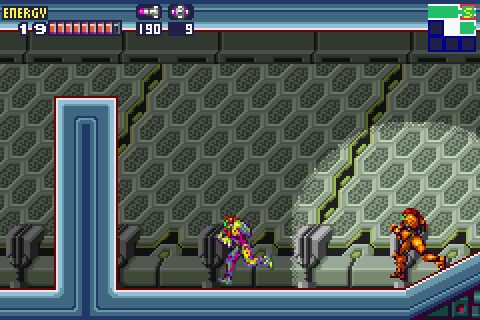
So Fusion did really well when it first came out; like surprisingly well actually. At least, when it came to reviews and critical praise. While it sold 100,000 copies in the US during its opening week and ultimately being the 24th best-selling game on the GBA (Metroid has never been known as a system seller), the press were a lot kinder and absolutely loved it. It received numerous positive reviews at launch, with IGN calling it an “outstanding achievement on the Game Boy Advance” and even giving it named the Best Game Boy Advance Adventure Game in 2002, while Game Informer gave it a perfect 10/10, one of the first games in the magazine’s history to get such a score. GameSpot named the best Game Boy Advance Adventure Game in 2002, as well as nominating it for Best Story, Best Sound, Best Graphics, and overall Game of the Year. It even won Best Handheld Game at the 2002 Interactive Achievement Awards. And I’m just scratching the surface here.
I know I haven’t been doing this for very long, but not since The Legend of Zelda: The Minish Cap have I covered a game that got this much critical praise, and I doubt that many of the games I’ll be covering in the future will get that much praise either. To put it bluntly, Metroid Fusion was beloved when it first came out. As for the impact……..did you watch E3? We’re finally getting Metroid Dread, a sequel to Fusion that has technically been in developer hell longer than Duke Nukem Forever! So then why, despite all of the praise, the new game coming out this year, and people having a fondness for it, is Metroid Fusion so often forgotten?
Honestly, I feel like Metroid Prime is the reason. Going back to that game a bit, but after Prime was released, it was even more beloved and well-received than Fusion was, with it often being cited as one of the best games ever made. And I won’t lie: I’m one of those people, and that as much as I like Fusion, the first Metroid Prime is a much better game overall, and it is easily in my top five favorite games of all time. And a lot of people feel the same way; remember when I said that GameSpot nominated Fusion for the best game of 2002? Guess what game it lost to? Metroid Prime; but that wasn’t the only award it won. It won Game of the Year and Excellence in Level Design at the Game Developers Choice Awards, and won numerous Game of the Year Awards from GameSpy, GameSpot, Nintendo Power, Edge Magazine, and EGM. It’s still one of the highest-rated games on Metacritic, and while it’s still a stupid title, it was at one point named the “Citizen Kane of Video Game.” I guess what I’m getting at is that Metroid Prime is an amazing game that proved Retro Studios was a talented developer and that without it we wouldn’t have gotten the amazing Donkey Kong Country Returns games.
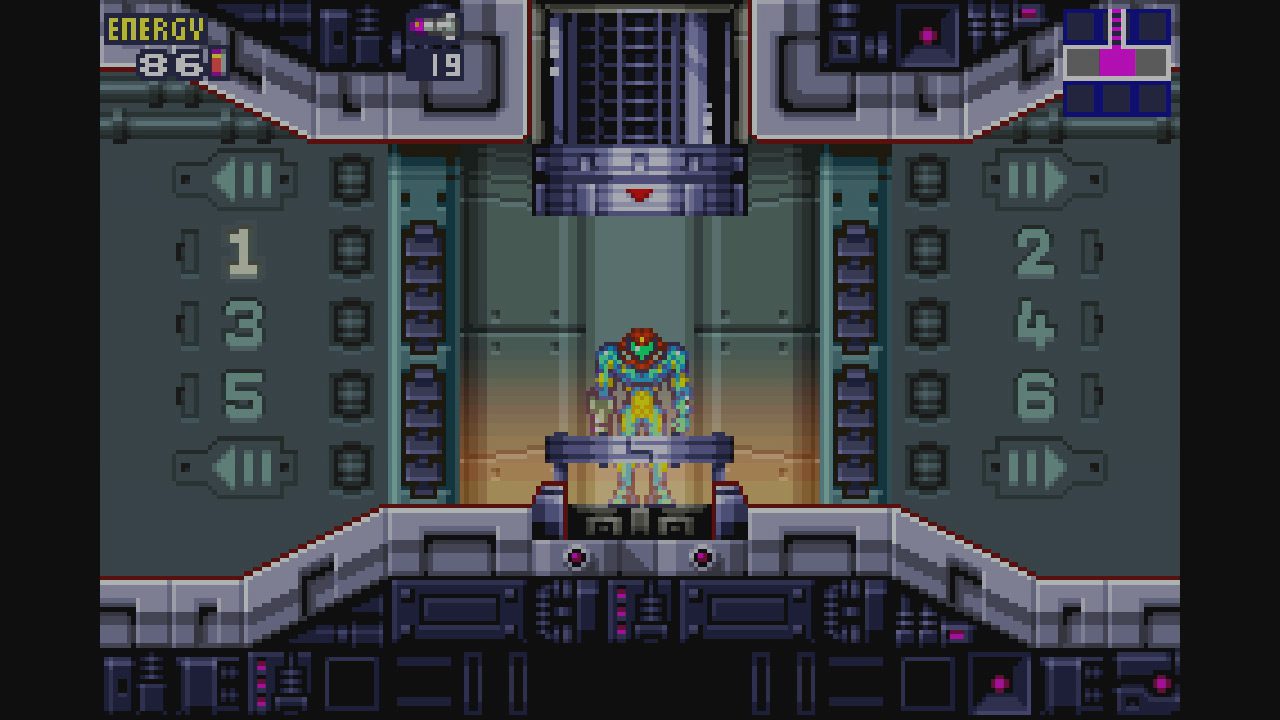
Compare all of that to Metroid Fusion, which keep in mind was pushed as the traditional game that fans could play in case Prime sucked, a game that while not bad, still has some minor complaints and was a bit of a mixed bag for fans. It’s a lot more linear than most games, exploration is somewhat limited, and while it’s still a great game, it was a radically different Metroid experience than what most fans wanted, kind of like what happened with Pac-Man 2: The New Adventures (though again, Fusion is a much, much, MUCH better game than that dumpster fire). It also doesn’t help that a couple years later we got a remake of the original Metroid on the Game Boy Advance, which while it didn’t get as many glowing reviews as Fusion, was still well-received and is seen by many people to be the superior Metroid game on the GBA.
Combine all of that, and I can see why Fusion is often left out of most discussions, which is a damn shame because as I’ve said before, and I’ll say again: Metroid Fusion is a great game. It has problems, yes, and there are better games in the series, but it’s still an excellent game that is a crowning jewel of the GBA library. In an alternate timeline where Metroid Prime 1 was either canceled or turned out to be crap, Fusion would be seen as the amazing game and would possibly be getting all the praise saved for Prime. Hell, maybe even Metroid Dread would have come out sooner. But that isn’t the case, and we’re in a timeline where Fusion is on the bench while Metroid Prime 1 scored the winning touchdown and got us to the State finals.
Is it worth playing now? And does it deserve better?
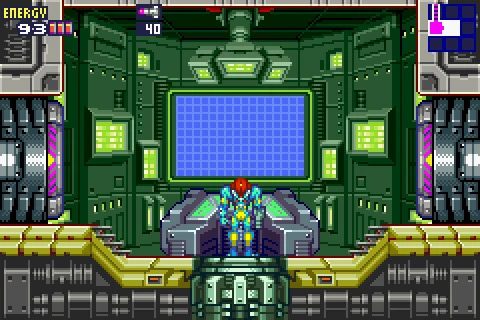
Considering all the awards and critical praise it got, not to mention that Metroid Dread isn’t a fever dream and is actually happening this year, I’m a little hesitant to say Metroid Fusion deserves better. But in terms of whether or not you should play it? Yes, absolutely.
Metroid Fusion is a pretty good game that you absolutely need to play if you haven’t done so. While it being more linear may be a turn-off for some fans, its story and sense of fear are definitely worth checking out, especially since few games in the genre or the series have been able to pull it off as well as Fusion. And while it may not be my all-time favorite game, I can see some merit to checking this out, especially to new players who wanted to get into the series and were put off by some of its design choices……just know that the rest of the series isn’t necessarily like this.
So in conclusion, Metroid Fusion is a great game, that you should absolutely play if you haven’t done so, or again if it didn’t click with you the first time. Besides, what else are you going to do while you wait for Metroid Dread?






Published: Jun 25, 2021 06:00 pm